Investigation materials: "200 years since the birth of Ada Lovelace, the first programmer of mankind"
Date: December 10, 2015, head of department No. 8 from investigator id1033.
Type of request: initiation of an investigation.
Reason: due to the suspicious activity of the user id1596704383 in the period from July 30, 2005 to December 9, 2015, I ask you to provide the necessary resources for Form 2 and authorize them in accordance with the Observer-z protocol.
Rationale: On the basis of data obtained from open sources, the PPSIA-2014 analytics system (Juniper) identified unique signatures (identifiers from sig8876 to sig8951 were assigned), indicating active collection and analytics of materials from the network of the Source Source 18 source. According to the order dated November 20, 2015, to report immediately about any activity in reality related to "Original Source-18", I notify that on December 10, at 16-00 Moscow time, user id1596704383 switched to active actions in reality.
I attach to the request the materials intercepted from the user’s drafts id1596704383 on December 10, 2015 on the public resource “Habrahabr”.
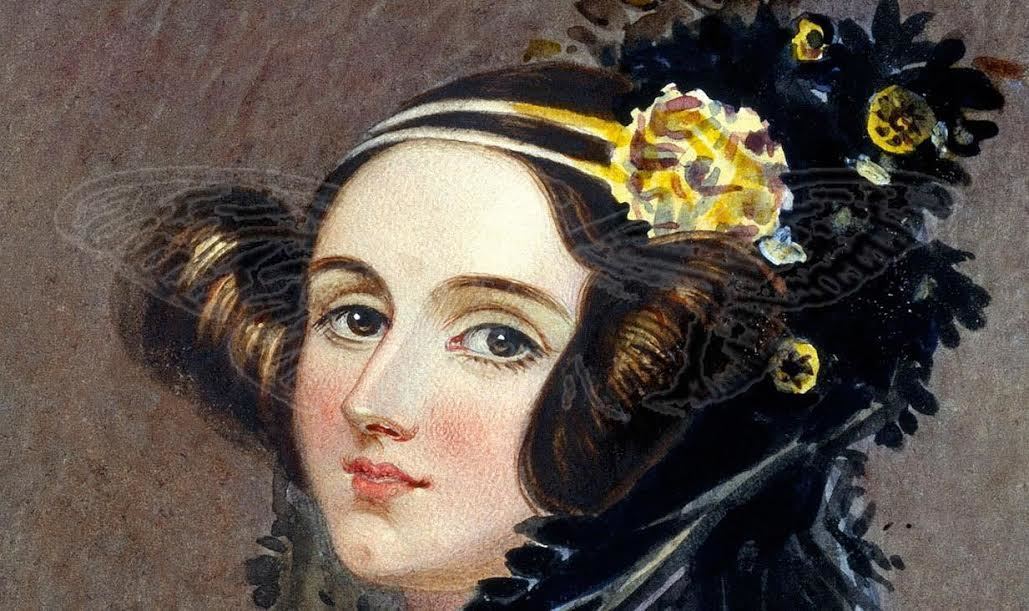
“I am a devil or an angel” (Ada Lovelace, from a letter to Charles Babbage 1843)
')
200 years since the birth of Ada Lovelace, the first programmer of humanity
On December 10, 1815, a poet was born to the poet Byron, who, in her 27 years in 1842, wrote the first program for the computer (steam) Babbage .
Ada is a programming language created in 1979-1980 during the project by the US Department of Defense to develop a single programming language for embedded systems (that is, real-time automated system control systems). First of all, onboard systems of control of military objects (ships, aircraft, tanks, missiles, shells, etc.) were meant. December 10, 1980 was approved by the standard language.
 Charles Babbage's analytical machine is a mechanical device, invented by the English mathematician Charles Babbage, designed to automate calculations by approximating functions by polynomials and calculating finite differences. The possibility of an approximate representation in polynomials of logarithms and trigonometric functions allows us to consider this machine as a rather universal computing device. [ Wiki ]
Charles Babbage's analytical machine is a mechanical device, invented by the English mathematician Charles Babbage, designed to automate calculations by approximating functions by polynomials and calculating finite differences. The possibility of an approximate representation in polynomials of logarithms and trigonometric functions allows us to consider this machine as a rather universal computing device. [ Wiki ]
Babbage created a description of the counting machine, which would be able to perform calculations up to the twentieth digit. The drawing with numerous rollers and gears, which were set in motion by the lever, lay on the table of the Prime Minister. In 1823, the first subsidy was paid for the construction of what is now considered the first computer on Earth and known as the “Big Difference Machine of Babbage”. Construction lasted ten years, the design of the machine became more and more complicated, and in 1833 funding was discontinued.
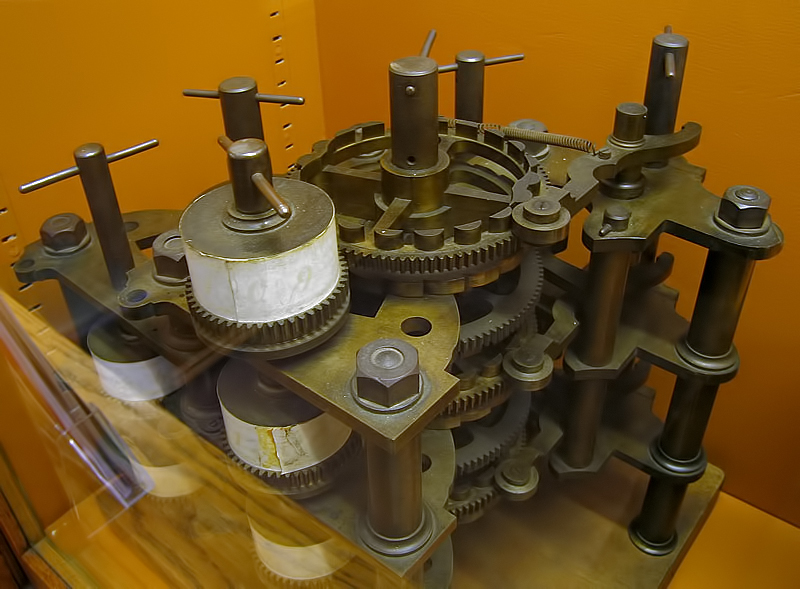
Part of the difference machine, Charles Babbage , assembled after the death of a scientist by his son from parts found in his father’s laboratory.
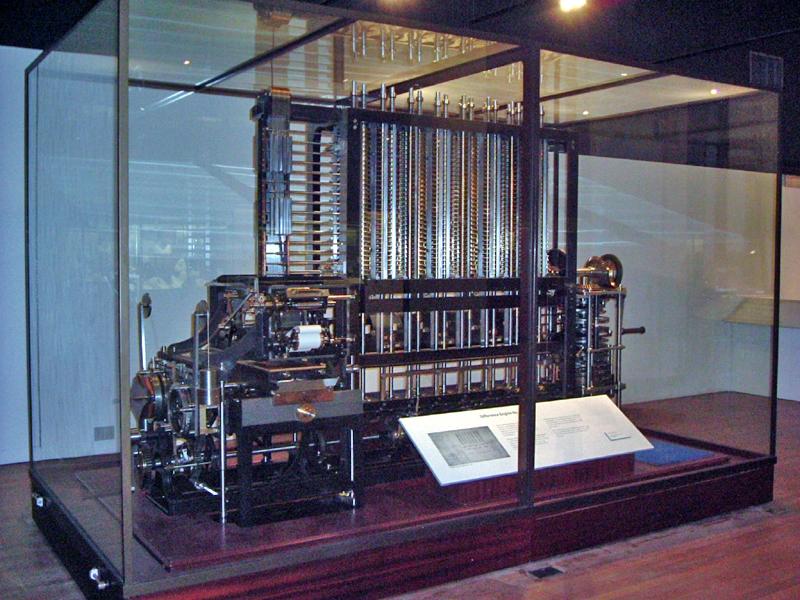
A copy of the differential machine in the London Science Museum
In 1842, Charles Babbage was invited to the University of Turin to hold a seminar on his analytical machine. Luigi Menabrea, a young Italian engineer, and the future prime minister of Italy, recorded a lecture in French, and it was subsequently published in the Public Library of Geneva in October of the same year. Babbage asked Countess Lovelace to translate the Menabrea records into English and accompany the text with comments. Lady Lovelace spent more than a year on this work, after which the works were published under the acronym AAL and turned out to be more extensive than the records of Menabrea. In one of his comments, Ada describes an algorithm for calculating Bernoulli Numbers on an analytical machine. It was recognized that this is the first program specifically implemented for playback on a computer, and for this reason Ada Lovelace is considered the first programmer, despite the fact that the Babbage machine was never designed during Ada's life. [ Wiki ]
First program
A week later, the mathematician received by mail the first computer program in the history of mankind - an algorithm that represents a list of operations for calculating those same Bernoulli numbers.
Lovelace's diagram of Note G,
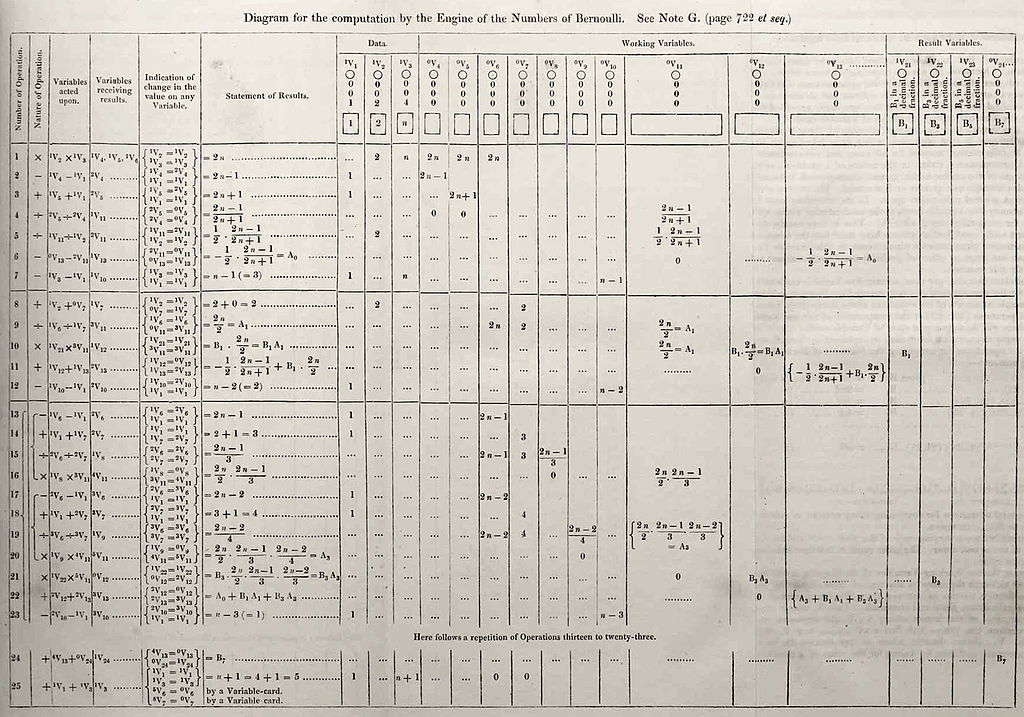
[ original ]
Efficiency of computing Bernoulli Numbers
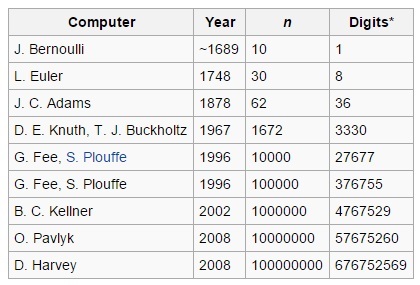
Digits - the number of zeros in the number (logarithm decimal)
PS
Happy birthday and happy programmer's day (s)!
UPD
Type of request: initiation of an investigation.
Reason: due to the suspicious activity of the user id1596704383 in the period from July 30, 2005 to December 9, 2015, I ask you to provide the necessary resources for Form 2 and authorize them in accordance with the Observer-z protocol.
Rationale: On the basis of data obtained from open sources, the PPSIA-2014 analytics system (Juniper) identified unique signatures (identifiers from sig8876 to sig8951 were assigned), indicating active collection and analytics of materials from the network of the Source Source 18 source. According to the order dated November 20, 2015, to report immediately about any activity in reality related to "Original Source-18", I notify that on December 10, at 16-00 Moscow time, user id1596704383 switched to active actions in reality.
I attach to the request the materials intercepted from the user’s drafts id1596704383 on December 10, 2015 on the public resource “Habrahabr”.

“I am a devil or an angel” (Ada Lovelace, from a letter to Charles Babbage 1843)
')
200 years since the birth of Ada Lovelace, the first programmer of humanity
On December 10, 1815, a poet was born to the poet Byron, who, in her 27 years in 1842, wrote the first program for the computer (steam) Babbage .
“The essence and purpose of the machine will change depending on the information we include in it. The machine will be able to write music, draw pictures and show science such ways that we have never seen anywhere. ”Ada Lovelace
Ada is a programming language created in 1979-1980 during the project by the US Department of Defense to develop a single programming language for embedded systems (that is, real-time automated system control systems). First of all, onboard systems of control of military objects (ships, aircraft, tanks, missiles, shells, etc.) were meant. December 10, 1980 was approved by the standard language.
 Charles Babbage's analytical machine is a mechanical device, invented by the English mathematician Charles Babbage, designed to automate calculations by approximating functions by polynomials and calculating finite differences. The possibility of an approximate representation in polynomials of logarithms and trigonometric functions allows us to consider this machine as a rather universal computing device. [ Wiki ]
Charles Babbage's analytical machine is a mechanical device, invented by the English mathematician Charles Babbage, designed to automate calculations by approximating functions by polynomials and calculating finite differences. The possibility of an approximate representation in polynomials of logarithms and trigonometric functions allows us to consider this machine as a rather universal computing device. [ Wiki ]Babbage created a description of the counting machine, which would be able to perform calculations up to the twentieth digit. The drawing with numerous rollers and gears, which were set in motion by the lever, lay on the table of the Prime Minister. In 1823, the first subsidy was paid for the construction of what is now considered the first computer on Earth and known as the “Big Difference Machine of Babbage”. Construction lasted ten years, the design of the machine became more and more complicated, and in 1833 funding was discontinued.
“For six months I was developing a more advanced machine project than the first one. I myself am amazed at the computing power it will have! ”- Charles Babbage

Part of the difference machine, Charles Babbage , assembled after the death of a scientist by his son from parts found in his father’s laboratory.

A copy of the differential machine in the London Science Museum
In 1842, Charles Babbage was invited to the University of Turin to hold a seminar on his analytical machine. Luigi Menabrea, a young Italian engineer, and the future prime minister of Italy, recorded a lecture in French, and it was subsequently published in the Public Library of Geneva in October of the same year. Babbage asked Countess Lovelace to translate the Menabrea records into English and accompany the text with comments. Lady Lovelace spent more than a year on this work, after which the works were published under the acronym AAL and turned out to be more extensive than the records of Menabrea. In one of his comments, Ada describes an algorithm for calculating Bernoulli Numbers on an analytical machine. It was recognized that this is the first program specifically implemented for playback on a computer, and for this reason Ada Lovelace is considered the first programmer, despite the fact that the Babbage machine was never designed during Ada's life. [ Wiki ]
“The operating mechanism of the Analytical Machine ... can affect other objects besides numbers, if the fundamental relationships of these objects can be expressed in the abstract language of the science of operations and can be adapted to act at the level of operational notation and the mechanism of the Analytical Machine. For example, if the fundamental relationships of pitch in the science of musical harmony and composition could be subjected to such expression and adaptation, the Machine could compose and develop scientific musical pieces of any degree of difficulty or length. ”- Ada Lovelace (1842)
First program
“I want to introduce an example in one of the notes: the calculation of Bernoulli numbers as an example of a machine calculating an undefined function without prior decision using the head and hands of a person. I am the devil or angel. I work like a devil for you, Charles Babbage; I sift Bernoulli numbers to you. ”(letter from Ada Lovelace to Charles Babbage, 1843)
A week later, the mathematician received by mail the first computer program in the history of mankind - an algorithm that represents a list of operations for calculating those same Bernoulli numbers.
Lovelace's diagram of Note G,

[ original ]
Efficiency of computing Bernoulli Numbers

Digits - the number of zeros in the number (logarithm decimal)
"You get more from people if you contradict them." Ada lovelace
PS
Happy birthday and happy programmer's day (s)!
UPD
Suspicious photo from user drafts id1596704383

Source: https://habr.com/ru/post/272841/
All Articles